

40cm


Welcome to the vibrant world of Coreopsis, commonly known as tickseed, a genus that offers a profusion of color to any garden. With origins stretching from Eastern Canada to the Southeastern USA, these delightful perennials boast a kaleidoscope of flower colors, ranging from sunny yellow to deep red, and even shades of purple and pink. The tickseed's lush green foliage serves as a beautiful backdrop, making the dazzling flowers stand out even more. While Coreopsis is not an evergreen and does not bear fruit, its generous blooming season and easy-care nature make it an ideal choice for gardeners seeking to add long-lasting color and vitality to their outdoor spaces.


40cm




50cm





30cm



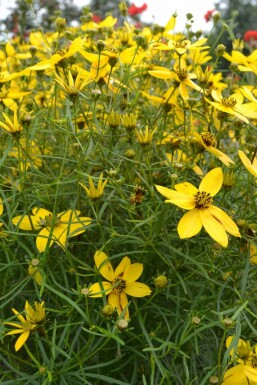
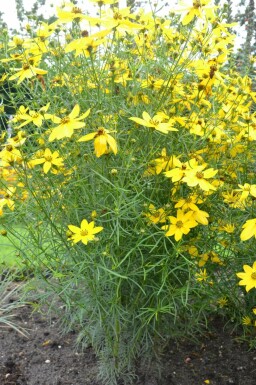
60cm


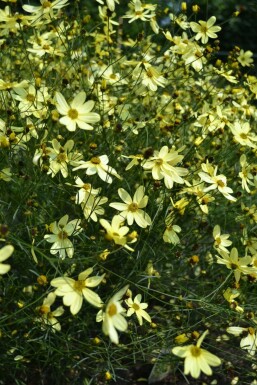
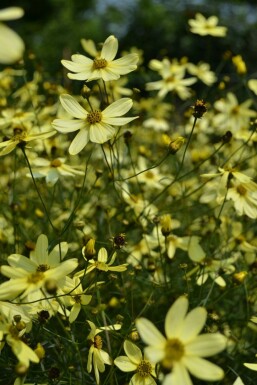


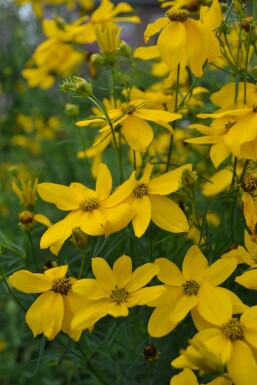
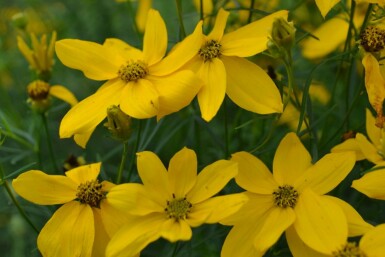





50cm




50cm




The genus Coreopsis, commonly referred to as tickseeds, is a vibrant collection of plants that are a staple in any garden seeking to add a splash of color. With a flowering period that spans from June to September, Coreopsis offers a continuous display of flowers in hues of yellow, red, purple, and pink. Native to regions from Eastern Canada to the Southeastern United States, these hardy plants are well-suited to a variety of environments, making them an excellent choice for gardeners of all skill levels.
Coreopsis species are known for their daisy-like flowers and can be utilized effectively in borders or group plantings. Their resplendent blooms are not only aesthetically pleasing but also attract beneficial pollinators to the garden.
Embrace the vibrant charm and delightful effervescence of Coreopsis, commonly known as tickseed, as it graces your garden with its resplendent blooms. Revered for their long flowering season and undemanding nature, these perennials add a splash of color that captivates the eye and invigorates the spirit. Whether planted en masse or as accent points, the tickseed's dainty, daisy-like flowers dance upon slender stems, bringing life and movement to any landscape design.
We would like to provide some tips on how to plant and care for a Coreopsis. By following these tips, you can be sure to enjoy your Coreopsis for a long time.
For optimal growth and vibrant blooms, Coreopsis thrives best when positioned in full sun. However, it can also tolerate partial shade, where it will still produce an ample floral display, albeit potentially less dense. The plant is versatile regarding soil types but requires well-drained conditions to prevent root rot and ensure overall health. An area that receives several hours of sunlight and has soil enriched with organic matter will provide an ideal setting, creating a lively and colorful border or group planting that enlivens any garden space throughout the flowering months.
Planting this species requires well-draining soil and a location that receives full sun to partial shade. It thrives in a variety of soil conditions, ensuring versatility in garden design. When planting, ensure the hole is as deep as the pot and twice as wide. Gently remove the plant from its container, loosen the roots, and place it in the hole. Backfill with soil, pressing down firmly to eliminate any air pockets. Water thoroughly to settle the soil around the roots and to help with initial establishment. Regular watering is important during the first growing season to establish a deep, extensive root system.
Fertilizing Coreopsis effectively supports its vigorous flowering and maintains the vibrancy of its foliage. These plants benefit from a balanced, slow-release fertilizer in early spring, as new growth emerges. A second application can be made at the beginning of summer to sustain the blooming period through the warmer months. It is essential to apply the fertilizer around the base of the plant, taking care to avoid direct contact with the foliage to prevent burn. Watering the plant after fertilizing helps in assimilating the nutrients into the soil, especially when the weather forecast does not predict rainfall. Regular feeding, coupled with proper care, will ensure that these species continue to produce their characteristic vibrant blossoms from June through September.
To encourage a continuous display of the vibrant blooms and maintain a tidy appearance, regular deadheading of faded flowers is advisable for Coreopsis. As blossoms begin to wilt, promptly remove them to not only enhance the overall aesthetic but to also stimulate further growth and deter unwanted self-seeding. This species thrives without the need for extensive pruning; however, a light trim can be beneficial. Post flowering, a gentle shaping of the plant can help to promote bushier growth and ensure a robust return the following season.
Maintaining the vibrancy of Coreopsis requires consistent moisture, particularly during the active growing season. These plants thrive with an average water supply, ensuring the soil remains well-drained and not waterlogged. During periods of prolonged dry spells or intense heat, it is crucial to supplement the natural rainfall to keep the soil from drying out completely. However, overwatering should be avoided, as Coreopsis is not drought-resistant and excessive moisture can be detrimental. Regular watering, matched with the plant's growth cycle and environmental conditions, will support its lush foliage and abundant flowering from June through September.
The vibrant Coreopsis, when potted, can be easily relocated to suit your garden's design whims, allowing for flexibility in landscape planning. This perennial thrives with minimal care, making it a favorite among both novice and experienced gardeners. Beyond its cheerful blooms, the Coreopsis provides an extended flowering period, gracing gardens with its presence from early summer to mid-fall, offering a sustained splash of color that enhances the visual appeal of any outdoor space.
To ensure continued health and vigor, Coreopsis benefits from division every few years. This simple process revitalizes the plant by encouraging new growth. Gently lift the plant from the soil, taking care to minimize root disturbance. Once removed, divide the clump into smaller sections, ensuring each has a portion of the root system. Replant these sections promptly, spacing them appropriately to accommodate future growth. Division is optimally performed during the cooler temperatures of spring or autumn, which allows the divided plants to establish themselves without the stress of extreme heat.
Embrace the charm of Coreopsis, a vibrant and delightful addition to any garden space. Renowned for its cheerful, daisy-like flowers, this plant offers a continuous display of golden-yellow blooms throughout the summer. Easy to grow and requiring minimal care, Coreopsis is a gardener's dream for creating a lively and colorful landscape.
